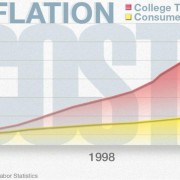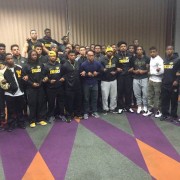According to the Order, concepts that lead to race and sex stereotyping are counter to merit principles and are not to be taught, advocated, or acted on by the U.S. Armed Forces, Federal agencies, government contractors (except those exempted by Executive Order 11246, the non-discrimination order of Sept. 26, 1965), subcontractors and vendors, and organizations receiving federal grants.
The Order held that training should promote respect for employees and that punitive measures and sanctions could be imposed for noncompliance. Programs to establish a hotline for people who believe training programs were noncompliant and investigate complaints against contractors for non-compliance with either EO 13950 or EO 11246. The Order did not prohibit promoting “racial, cultural, or ethnic diversity or inclusiveness” or the objective discussion of the divisive concepts as part of academic instruction.
While the Order sent shock waves throughout many sectors of society, it is not as foul or offensive as many thought. It is doubtful that there are any universities, for example, that endorse training programs that provide training grounded in the divisive concepts contained in the order. However, it does imply that they should be careful regarding the consultants hired to provide training and ensure that they promote nondiscrimination practices without promoting race and sex stereotyping.
A memorandum by Russell T. Vought, Director of the Executive Office of the White House, dated September 28, 2020, provided steps for the programs and determined the spending on each session.
Review of training programs could include a focus on identifying those using concepts, such as Critical Race Theory, White privilege, intersectionality, systemic racism, positionality, racial humility, and unconscious bias. Use of such terms by training programs was deemed potentially useful in identifying training programs prohibited by the Order. It is the implementation of the Order that leads to insidious practices.
Certainly, training programs could use such concepts without violating the provisions of the Order. Take White privilege, for example. This concept denotes a feature of racism, but it does not follow that every White person is racist or is responsible for the past actions of their forefathers. Also, consider the concept of systemic racism, which refers to the institutional features of intergroup domination. To offer a diversity training program without discussing the systemic and institutional features of America’s racism would fall short in promoting an understanding of its structural and dynamic aspects.
Given that the U.S. District Court for the Northern District of California issued a nationwide preliminary injunction on December 24, 2020, halting the enforcement of EO 13450, and President Joseph Biden Jr. issued EO 19385 on January 20, 2021, which revoked the prior Order, some readers may think that this discussion is of little practical relevance. Such is not the case as the nation is in the midst of opposing social movements addressing social domination and social justice, one of several conflicts and tensions.
A popular framework for understanding American racism as a possible indicator of a violation of the Executive Order. The framework has gained popularity and widespread use since its beginnings in the 1980s, especially among active people in the pursuit of social justice.
Critical Race Theory (CRT) emerged from the Critical Legal Studies (CLS) debates that were part of the Conference on Critical Legal Studies of 1977. Concerned with human emancipation, the debates centered on how the law protects class and hierarchy in society, the need to reveal political decision-making in the legal process, and how to address it.
Critical Race Theory emerged by critiquing the emphasis on class by CLS at the expense of race. This omission, it was argued, silenced the voices of ethno-racial minorities. It ignored the legal and political decisions that harmed oppressed populations and reproduced their subordination while promoting White interests. CRT replaced the emphasis on class by CLS with race and endeavored to give voice to ethno-racial minorities through storytelling. Viewing these populations as sources of knowledge, story telling gives voice to their experiences and perspectives and is intended to disrupt the dominant discourse on racism and White Supremacy.
Over time, the initial thinkers in what came to be known as CRT were joined by thinkers from education, sociology, literature, giving rise to identity-specific experiences and views such as LatCrit, AsianCrit, and TribalCrit. These varieties shed light on group-specific interests and views and because CRT was seen by many as dreaming in Black and White.
Given that its roots are in law, an applied field, CRT has had applied and activist emphases from its beginnings. While its aim is not to explain racism and its components in scientific terms, its stories and qualitative accounts have shed light on the mechanisms of racial domination in the United States. Its framework(s) have reached members of social justice movements who have adopted its concepts and perspectives and used them as part of their organizing and movement activities. Most employ the key concepts highlighted by Vought as potential indicators of training programs possibly violating EO 13950.
As with all social movements, there is a tendency for some members to overgeneralize elements of their social justice perspectives and to think in absolutist terms. Yet, given the guidance provided by Vought, EO 13950 may provide cover for a coordinated assault on diversity training programs by an administration that not only repeatedly made racist statements but focused on giving voice to the racial discontents of White Americans and sowing divisions throughout society.
Feeling threatened by the shrinkage of the middle class, economic instability, immigration, demographic shift, and social justice movements, many White Americans began turning to White Supremacist ideologies.
President Trump came to power by harnessing and mobilizing those discontents using a racist ideology against social justice movements in the context of a broader political movement promoting radical individualism, small government, and right to work policies. In this context, it is important that in moving forward, social justice activists examine how their application of CRT to promote social justice might be engendering a backlash to their aims, not because most White Americans want to maintain racism, but because they are experiencing the application of the “divisive concepts” highlighted in EO 13950. They may develop resentment against being accused of White privilege and that they are racist by virtue of being White Americans.
Clearly, White privilege is a differentiated privilege, with some more privileged than others, usually based on socio-economic status. Poor Whites, for instance, have few if any privileges accruing based on being White. Indeed, there are derogatory labels used in everyday life to refer to them.
Vought’s guidance also targets systemic racism, a concept that has gained fluency in recent years. Much like other concepts used in the anti-racism movement, systemic racism is nothing more than old wine in a new bottle. The structural and institutional aspects of American racism have long been emphasized by sociological theories of intergroup and race relations.
What is of concern in today’s world of intergroup tensions and conflicts is the continuing use of the Black/White binary that frames discussions of racism in the public discourse.
This is contrary to the need to address American racism as a system that dominates many groups at once in ways that are more alike than different despite different historical mechanisms. Addressing systemic racism requires going beyond group-centric interests and focusing on transforming existing structures and processes into equitable and inclusive practices.
________
Published in NEXO, The Julian Samora Research Institute, Michigan State University, Spring 2021.



